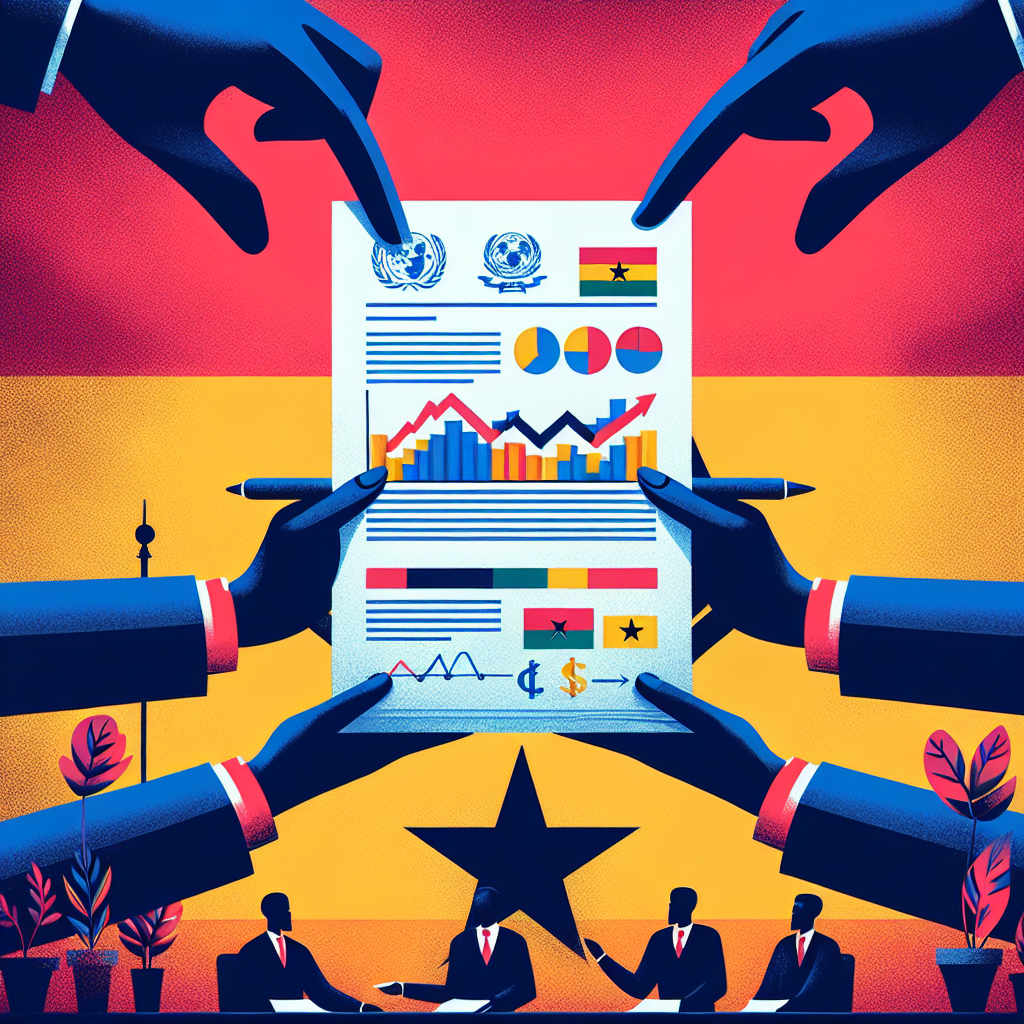Ghana's Path to Economic Recovery: Debt Restructuring Milestone
Ghana has received a draft memorandum of understanding on debt restructuring from its bilateral creditors. The agreement aims to restructure $5.4 billion in debt, facilitating an IMF disbursement and economic recovery. The government is working to finalize the agreement quickly, aiming to stabilize its economy and currency.

Ghana has received a draft memorandum of understanding on debt restructuring from its bilateral creditors which it will now quickly review with the aim of signing it soon, its finance minister said on Friday.
The memorandum will formalise a provisional agreement
reached in January with government creditors, including China and France, to restructure $5.4 billion of debt, as the West African country tries to chart its way out of its worst economic crisis in a generation. Finance Minister Mohammed Amin Adam said the document paved the way for the International Monetary Fund's executive board to meet next month to approve a disbursement of $360 million under the country's $3 billion bailout programme.
"As of yesterday, 23 May 2024, we officially received the draft Memorandum of Understanding from the Official Creditor Committee (OCC)," Amin Adam told a press briefing. "The government, therefore, with support from our financial and legal advisors, will quickly review this draft agreement with a view to finalising and signing the agreement with the OCC as soon as possible."
Ghana defaulted on most of its overseas debt in December 2022 after servicing costs soared, becoming the second African country after Zambia to default during the COVID-19 pandemic. It has restructured most of its local debt but is yet to agree a deal with holders of about $13 billion in international bonds.
On the talks with Eurobond holders, Amin Adam said they ended in the middle of last month with "very narrow" differences, adding that the government was determined to reach an agreement. He said $2.32 billion in foreign loans by year-end were expected to shore up the country's international reserves and relieve pressure on the cedi currency.
Local economist Leslie Dwight Mensah, a research fellow at the Institute for Fiscal Studies, said the draft agreement with official creditors would be a much-needed sentiment boost for the cedi. ECONOMIC RECOVERY
Ghana's economy has started to recover, with inflation easing from around 54% in December 2022 to 25% in April 2024 and 2023 growth of 2.9% exceeding the IMF's 2.3% forecast. Together with Zambia and Ethiopia, the world's second-biggest cocoa producer is reworking its debt under the G20 Common Framework, a process set up during the pandemic to speed up debt overhauls.
However, progress has been slow, holding back the countries' economic recoveries and access to overseas loans, aid and investment. The IMF declared Ghana's debt unsustainable in its Debt Sustainability Analysis (DSA) and is aiming for the country to restore itself to a "moderate" risk of debt distress by 2028.
This would bring Ghana's public debt-to-GDP ratio from 88.1% at the end of 2022 to 55% by 2028. Ghana in April found common ground with some of its biggest bondholders, including Western asset managers and regional African banks. But the IMF said that the interim deal was outside the DSA threshold and needed to be tweaked. The African banks had also rejected parts of the deal, including an option to retain the original value of the bonds with a longer maturity and lower coupon.
The government has said it is working to satisfy the IMF's requirements.
(This story has not been edited by Devdiscourse staff and is auto-generated from a syndicated feed.)
ALSO READ
Claudia Sheinbaum Keeps Finance Minister for Smooth Transition
NZ and Fiji Strengthen Partnership with New Bilateral Agreements
Nirmala Sitharaman Reappointed as India's Finance Minister in Modi's Third Term
Will India's Finance Minister Support Billionaire Tax at G20?
For first time we noted that during polls, PM Modi, Home Minister Amit Shah, finance minister commented on stock market: Rahul Gandhi.










